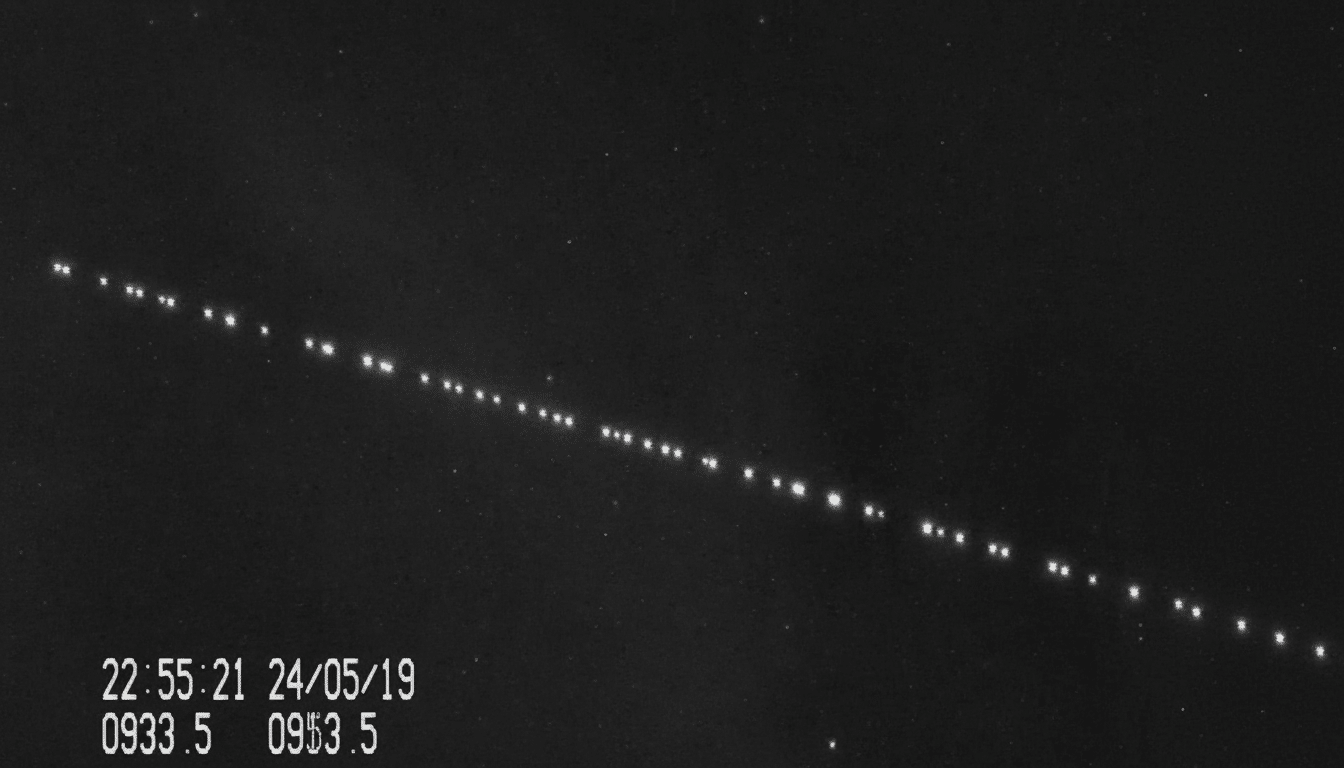SpaceX’s Starlink megaconstellation has passed a historic milestone, with more than 10,000 satellites launched into low Earth orbit. Starlink hit this number during a pair of Falcon 9 missions that added dozens more spacecraft to the ring, a cadence that has made near-routine launches the basis of the world’s largest communications network in orbit.
The milestone highlights the speed at which Starlink has developed since the start of the two-test-satellite pair in 2018 and the first 60-satellite shipment afterward. Over that span, the project went from an ambitious idea to a force in orbit.

What Crossing 10,000 Satellites Really Means for Starlink
“Launched” does not mean the same as “currently operating.” According to independent tracking from astronomer Jonathan McDowell and other catalogs, about 8,600 Starlink satellites are currently in low Earth orbit, with the rest having reentered the atmosphere or been decommissioned.
According to estimates, SpaceX units are designed to serve a nominal term of about five years before being decommissioned. The duration is an important factor influencing debris mitigation. This is because nearly all U.S.-licensed low Earth orbit satellites must be decommissioned within five years following the mission under new Federal Communications Commission rules, in contrast to the old 25-year measure.
The Starlink constellation mainly operates at orbits 500–600 kilometers because, if a spacecraft fails, natural atmospheric drag will deorbit a satellite in years, not centuries.
The scale and launch cadence behind Starlink’s growth
Reusability is the unassuming engine of this growth. Falcon 9 boosters routinely fly many times over, allowing for numerous Starlink launches in the same week if necessary. This rapid pace of shipment — once unimaginable within orbital rocketry — has enabled SpaceX to mass-seed orbital planes and replace aging spacecraft without stalling service expansion.
The newer “V2 Mini” satellites carry laser inter-satellite links, routing data across space rather than back down to ground stations for every hop. That cuts the latency of long hauls, increases polar and oceanic coverage, and lets operators offload traffic from limited ground infrastructure. The performance of constellations is a matter of geometry as well as quantity, and SpaceX has been quietly filling out multiple orbital shells and inclinations to make it easier to balance capacity and coverage.
Regulatory constraints and expansion plans
This is, on paper, only the middle chapters. The FCC has approved 12,000 first-generation Starlink satellites and later greenlit 7,500 second-generation spacecraft of an estimated 30,000 requested, with the rest under review. Globally, submissions to the International Telecommunication Union govern spectrum coordination, a complicated and time-consuming process as an increasing number of operators target similar frequency bands.

Practically speaking, the 10,000 mark connotes both maturity and momentum. It’s a sign that the company has the ability to continue replacing older units as they wear out and expand total capacity — a crucial attribute for a broadband network with demand growing by each new geography, enterprise contract, and sector served, whether aviation or maritime.
Benefits and risks at a smaller operational scale
Starlink’s value proposition has thus far been most legitimized by its deployments in rural communities, disaster-stricken regions, and battle zones, where terrestrial systems have failed or never existed. Emergency professionals have used the service to restore communication in the wake of wildfires and hurricanes, and airlines and ships are increasingly employing space-based connections instead of GEO satellites in areas with lots of available spectrum.
However, with scale comes obligations. Bright satellites’ influence on nighttime skies has been scrutinized by astronomers. SpaceX has attempted a few remediation actions, including darkening treatments, sunshades, and orientation alterations, the first two of which have significantly reduced brightness. Still, the adjustments have not been consistently carried out. The scientific community is urging cross-cutting standards as additional constellations go online.
The other concern is traffic management. As low Earth orbit becomes increasingly cluttered, the European Space Agency and several industrial enterprises have reported a substantial increase in close-approach notifications. According to SpaceX, its satellites avoid close-approach collisions using autonomous technology that draws on U.S. Space Force data and commercial data. In the long run, the U.S. Office of Space Commerce and international efforts to create global space coordination norms will be essential.
The next component of growth is second-generation hardware, which is intended to provide increased throughput per satellite and more robust communications, including direct-to-cell functions such as simple texting and crisis communication with land-based operators. The first-generation satellites are managed with a rolling tide of retirements and replacements, keeping significant numbers in orbit even as individual units depart orbit.
Crossing 10,000 satellites launched is not so much a finish line but a waypoint. It proves that mass production and launch, rapid reuse, and coordinated orbital deployment can be used to expand a space-based network of such a size that it spans the nation. The real challenge today is to perpetuate this scale in a secure, responsible, and lucrative way while continuing to share the sky as it becomes increasingly crowded.

